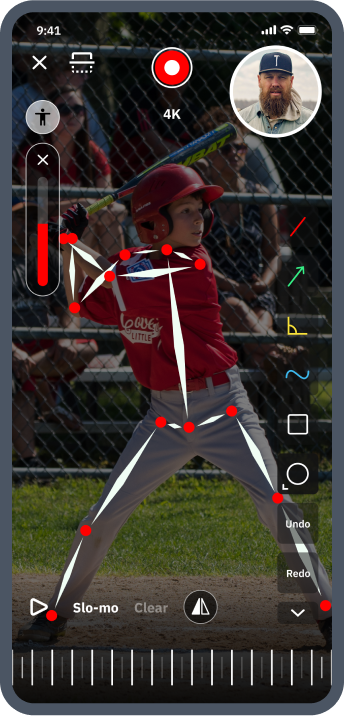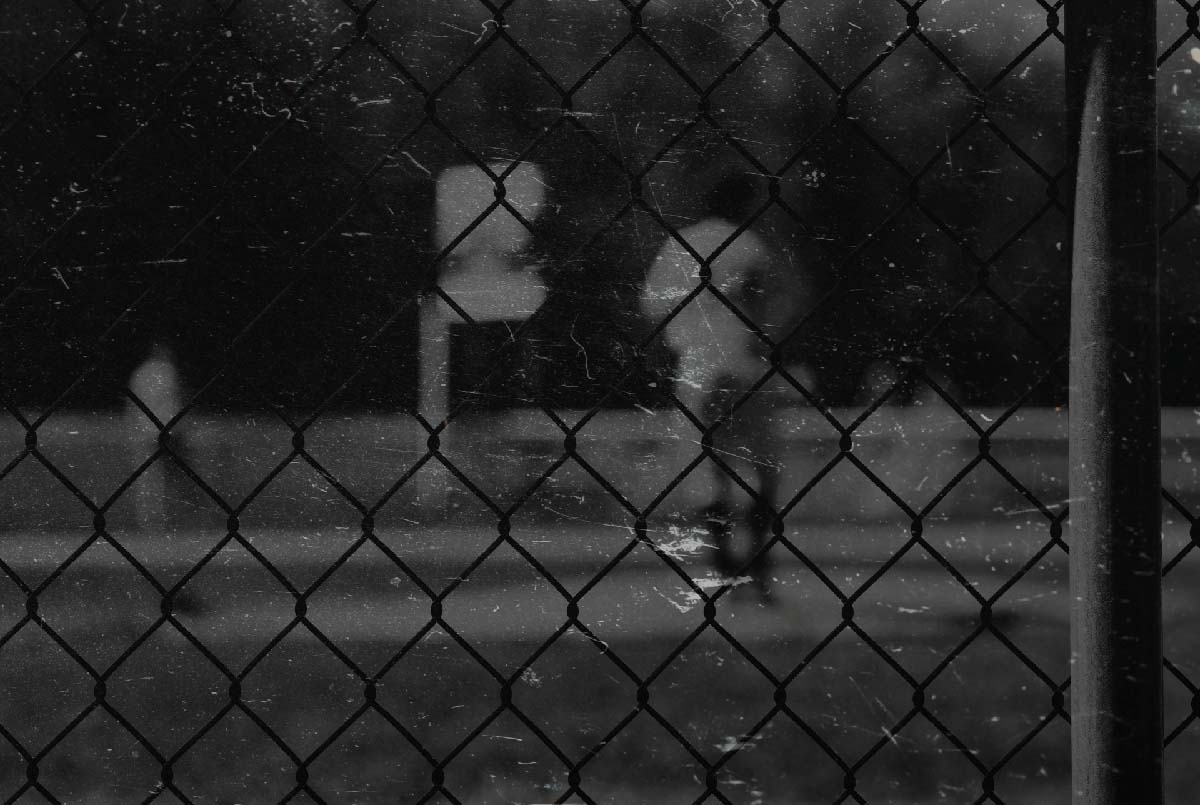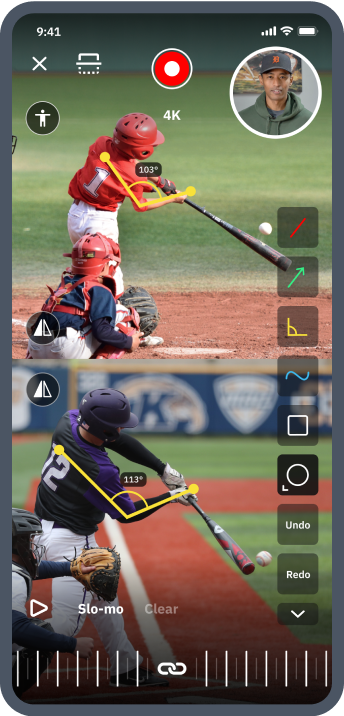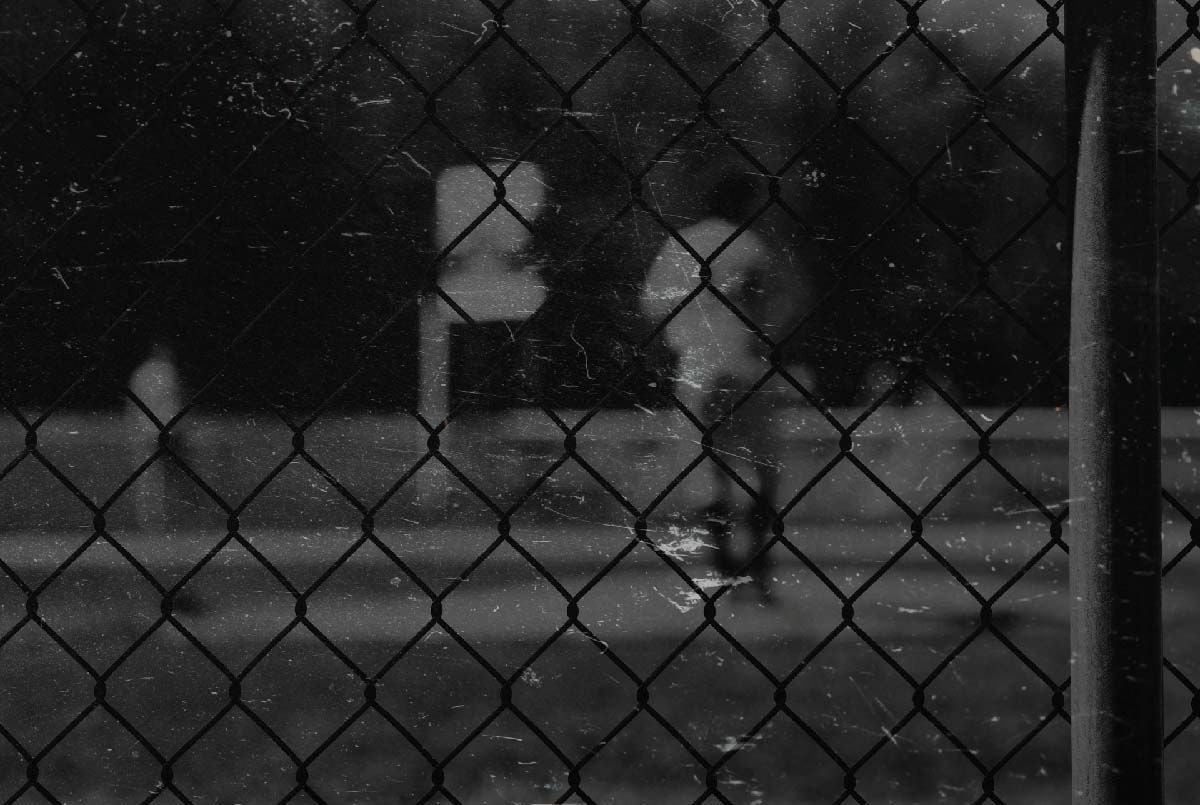How To Hold a Baseball Bat | A Beginner’s In-Depth Guide

Successful hitting is considered the hardest thing to do in all sports for a reason.
Squaring up a round ball hurled with bad intentions and intentional movement, not just on a round bat, but on a 2-inch wide area of that round bat, feels like a miracle of psychics and grit.
So complexity comes with the territory.
But amidst all the biomechanical swing breakdowns, advanced verbal cues, innovative drills, and software-measured performance metrics, one of the most overlooked aspects of hitting is how a player should grip their bat.
And how you hold the bat can significantly influence your swing mechanics and outcomes at the plate.
In this guide, you’ll learn the proper way to hold a baseball bat – what to do, what not to do, and how best to find a grip that suits you.
Unlock your ballplayer’s full potential
Find the perfect vetted coach to build a solid foundation or take your player's skills to new heights.
Download the free app

Why Does Your Bat Grip Matter in Baseball?
The way you pick up and hold a baseball bat is akin to how you put on your shoes in the morning.
It’s a rather mundane step at the start of your busy day. And you have all sorts of more complicated and exciting things to do.
But putting the left foot’s shoe on your right foot or not fixing a crumpled backheel with a shoe-horn before you leave the house will have a negative impact on the rest of your day that’ll be hard to miss.
Ridiculous analogies aside, a good grip can impact your power, speed, pitch reactivity, and comfort.
Power
An inferior grip can kill your power.
A proper grip works with and not against your body’s kinetic chain that generates and transfers swing power from your feet to hips to hands.
Hitting for power is one of the five tools most scouts, recruiters, and team coaches look for when evaluating a ballplayer.
You don’t want to sabotage your potential power generation with a poor grip before you even swing the bat.
Speed
A good grip on the baseball bat will also help quicken your swing.
In a 2009 study on baseball hitting kinematics, researchers found that where you grip the bat impacts how speedily you move your bat through the strike zone.
Choking up, they concluded, results in a smaller range of motion for your body, resulting in a more open stance and making contact with the ball earlier in your swing.
Therefore, when you choke up or adjust your grip in any way, the rest of your body is likely to compensate as well.
Choking up is fraught with its own major issues, which we’ll explore a bit later.
But for now, it’s important to know that bat speed is also a function of the kinetic chain efficiency mentioned above – and that an incorrect bat grip can severely stifle it.

Reactivity
Having a proper grip on the bat and keeping your hands fairly loose until you’re near contact will also improve your reaction capabilities.
Loose hands translate to faster muscle firings – giving you the advantage when you have to react to an unexpected pitch or location.
Comfort
Once you’ve homed in on the correct options for gripping a bat, the final choice will come down to comfort.
Like most things, best practices only take you so far. You will still have to make your grip your own eventually.
Your grip may not look exactly like those of your teammates – and that’s okay.
Your palm-size, finger lengths, forearm strength, and a myriad of other variables will be different from your teammates as well.
Proper mechanics are essential, but so is being relaxed at the plate.

The Top Baseball Bat Grip Mistakes - How Not to Hold It
Which mistakes do young players make when holding the bat?
These are the three most common:
- Your grip’s too tight – As already mentioned, a loose grip on the bat is preferable to a tight one.
As you move through the motion of your swing, your hands will tighten enough to make contact with the ball. At the beginning of your swing, though, you should keep your hands somewhat loose. - Uncomfortable grip – Many young players will use a grip that doesn’t personally suit them because they were taught to hold the bat that way by a given coach.
Even if the grip feels uncomfortable, they’ll keep using it because they learned it as the “right” way to hold a baseball bat. - Burying the bat in the palms of your hands – Some players place the bat deep in the palm of their hands. Doing so, chokes the power in your swing.
You also surrender control over your swing, preventing you from making quick adjustments to pitches and locations at the plate.
So you know what not to do. How should you hold a baseball bat?

The Proper Way to Hold a Baseball Bat
If you’re confused about your grip or don’t know where to start, there’s aseries of quick steps you can do to find your best grip.
- Step 1
Take the baseball bat in your guide hand, AKA bottom hand.
For right-handed batters, your guide hand is your left hand – vice versa for left-handed batters.
For this step, it doesn’t matter if you’re holding the bat with the barrel cap straight up or if you place its end on the ground – whichever feels more comfortable for you.
It also doesn’t matter which way the label’s facing for composite and metal bats. But wooden bats should have the label facing up. - Step 2
Slide your guide hand toward the knob of the bat, then wrap your fingers around the bat handle.
Keep your index finger separated from your other three fingers, but still wrapped around the handle.
The bat handle should be loose in your fingers and your knuckles should be pointed away at a 45-degree angle. - Step 3
Mimic your guide hand’s grip with your other hand.
Keep your grip light and loose – avoid putting the bat in the palm of your hand. - Step 4
Once both hands are wrapped around the bat, you’ll notice that you have one of the following grips: the door knocker; the box; or a combination of the two.
Any of these grips is acceptable, as long as you keep the previous tips in mind.
Now, let’s explain what these grips actually entail.
Baseball Box Grip Vs. Knocking Knuckles When Holding a Bat
There are two predominant grips taught to young baseball players.
The first is the box grip, the second is the door knocker, also known as knocking knuckles.
Again, both grips are fine. Whichever you choose will depend on what feels most comfortable to you.
The Box Grip
The box grip is looser than the door knocker.
You’ll have a box grip when the first set of knuckles – the knuckles closest to your palm – of your bottom guide hand line up with the second set of knuckles of your top hand.
The first knuckles of your top hand will consequently line up with the second set of knuckles of your guide hand.
Thus, your hands form a “box,” which is where the name stems from.
For clarity, your first set of knuckles would be the ones you'd try to strike a target with when throwing a punch.
This box can be seen in the picture below.

The Door Knocker Grip
The door knocker grip is a bit tighter. You’ll line up the second sets of knuckles in a straight line.
The second set of knuckles on your hand are the ones typically used to know on doors, hence the name.
There’s an in-game example of using knocking knuckles in the image below.
But if your hands don’t perfectly resemble either of these grips, then don’t worry.
As long as your grip is somewhere in between these two, you still have a “proper” grip.
In fact, gripping somewhere in-between is the most common place to be at the high levels of play, at least according to the big leaguers we’ve spoken to about this.
For an even more visual explanation of the difference between the box grip and door knocker grip, check out this video from Pro Speed Baseball.

What About Choking Up on The Bat?
“Choking up” on the bat means moving your gripping hands away from the knob and toward the barrel of the bat.
Coaches often still instruct players to choke up on the bat, especially when they are behind in the count, because it’s supposed to produce a quicker and more controlled swing, helping players more easily make contact with the ball.
We wrote a whole guide on what the best two-strike approaches are for hitters that you can check out.
But when striving to get your baseball bat grip just right, you’ll probably wonder if you should choke up or not.

The Science Behind Choking Up on The Bat
In the previously mentioned 2009 study on baseball bat grips, a team of eight researchers from various institutions carried out an experiment to determine if “choking up” on the bat really does “quicken” your swing.
They noticed that batters who had choked up also had a more open stance during their swing.
As a result, they speculated that this “may help the hitter see the ball better” and “help the hitter better control” their movements.
This more open stance could have resulted from unconsciously over-compensating for the extra handle area poking out below the hands that needs to clear the hitter’s body when swinging.
Despite these potential benefits to choking up, the researchers also found that “When choking up, the batter adjusted his swing mechanics to be quicker but sacrificed potential gains in bat velocity” and “diminished force production.”
So, choking up causes you to move your body more quickly but doesn’t actually speed up the bat. It also takes away some of your power.
As studies like the one cited above began to analyze choking up more closely, it became less prevalent in the modern game. For obvious reasons.

Wrapping Up on How To Hold a Baseball Bat
Hopefully, after reading through this guide, you feel more confident about your bat grip.
As long as you avoid the pitfalls of over-squeezing or burying the handle in your palms, you’re on the right track for batter’s box success.
After a while, your grip, like your swing, will start to become your own.

About the Authors
Courtney Withrow
Professional Writer
Originally from the U.S., Courtney is a Brussels-based freelance writer with a Master’s degree in International Relations. She grew up playing softball and still loves the game.

